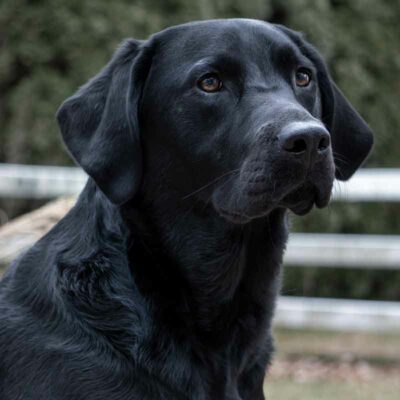The Labrador Retriever Dog breed

The Labrador retriever is a robust, medium to large canine breed characterized by a short coat and a sturdy build. It belongs to the sporting group and can trace its origins back to Newfoundland and the United Kingdom. Labs are celebrated for their intelligence, amiable disposition, and overall good temperament.
While they were initially bred for hunting, they have also proven to be exceptional companions and excel in various roles, including service and therapy dogs. Additionally, Labs find themselves involved in tasks such as drug and explosive detection, water rescues, and search and rescue operations.
Labrador Retriever Traits
Labrador retrievers are renowned for their sociable and outgoing personalities. Their behavior is strongly influenced by their high energy levels. They thrive on having a purpose or an activity and are exceptionally trainable.
Historical Background of the Labrador Retriever
The ancestors of today’s Labrador retriever actually hail from Newfoundland rather than Labrador. In the early 1800s, a breed known as the St. John’s water dog, also referred to as the lesser Newfoundland, was a common sight on fishing vessels. These dogs were esteemed for their aquatic skills, strong work ethic, and friendly nature.
British nobles, while visiting Newfoundland, were impressed by these dogs and brought them back to England to serve as skilled gun dogs for retrieving waterfowl during hunts. The breeding of this line continued in England, as the breed was diminishing in Newfoundland. This process eventually led to the establishment of the breed standard recognized today.
The American Kennel Club officially recognized the Labrador retriever in 1917. Over the years, Labradors have consistently held their position as one of the most popular dog breeds in the United States. Throughout history, Labradors have been companions to notable figures, including Prince William, Prince Harry, and President Bill Clinton. They’ve also played vital roles in military, police, and service-related work.
Caring for Labrador Retrievers
Labs thrive in homes where they receive abundant exercise and training, as they are high-energy dogs requiring significant attention. Grooming is relatively straightforward, although they do shed quite a bit.
Exercise
To prevent hyperactivity and destructive behavior, Labradors must engage in a minimum of two hours of daily physical activity, which may include walks, jogs, hikes, and active playtime. Given their strong people-oriented nature, they prefer exercising with their owners rather than being left alone in a yard.
Labs’ love for swimming, stemming from their history as water dogs, makes activities like dock diving ideal for their entertainment. Additionally, their retrieving instincts make games of fetch a favorite pastime. Involving them in service work, therapy, and other canine tasks can contribute to their physical and mental well-being.
Grooming
Labs possess smooth, water-resistant coats that require minimal maintenance. However, their dense fur results in regular shedding, necessitating at least weekly brushing to remove loose hair and distribute natural skin oils. Shedding tends to intensify during seasonal changes, so frequent brushing may be required. Fortunately, their coats tend to stay clean naturally, requiring a bath only every couple of months.
Routine nail trimming, ideally monthly, helps maintain their paw health. Daily teeth brushing and weekly ear checks for dirt, debris, and signs of infection are also important. After swimming or bathing, it’s crucial to dry their ears.
Training
Commence socialization and training for your Labrador from a young age to channel their energy and strength positively. Labradors are eager to please and thrive when they have a purpose, which often involves learning obedience skills. Consistency and positive reinforcement are key to successful training.
It is advisable to expose Lab puppies to various people, animals, and environments to instill calmness and confidence. Enroll in puppy classes as soon as your dog meets the age requirements.
Labradors are generally well-suited for family life, getting along with children and exhibiting loyalty and affection. Nevertheless, young children should always be supervised around dogs. Labradors also tend to adapt well to multi-pet households, particularly when they are socialized with other animals from a young age. Introduction of new pets should be carefully monitored. Obedience instructors can provide guidance on introducing both children and other pets to your Labrador.
Common Health Concerns
Labs are typically healthy, and responsible breeders should screen for potential health conditions. However, some hereditary health issues may arise, including:
- Elbow dysplasia and hip dysplasia
- Heart problems
- Hereditary myopathy (loss of muscle strength and control)
- Eye problems
- Bloat
Diet and Nutrition
Ensure that fresh water is always available to your Labrador. Feed them two meals a day of high-quality, nutritionally balanced dog food. Consult your veterinarian regarding the appropriate amount and variety, as these factors can vary depending on the dog’s size, activity level, and other individual characteristics. Dietary needs may also change throughout a dog’s life.
Labrador retrievers are prone to weight gain and obesity, in part because of their love for food. It’s essential to portion out their food and be cautious with treats to prevent overeating.





